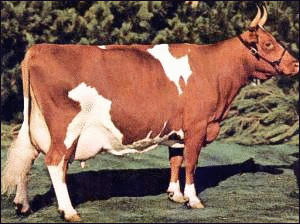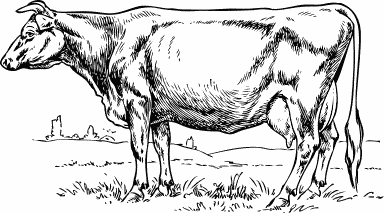"Objects" would be just what you expect...the very toy, book, DVD jacket, snack food, shirt or whatever other item you might be talking with your child about. If you hold up Goodnight Moon or Bartholomew Bear as you offer to read your baby's choice and she points to Ba Bear, she has just used the book as an object to express her choice. It's an intuitive thing for both parent and child to do, and can be a very convenient way of incorporating choice-making in a natural way.
Even though my daughter is a teenager and capable of reading, we still grab objects when they are the most convenient, natural option. If she's choosing a movie, why not simply hold up the DVD jackets? It's quick and involves no extra work of creating a symbol to represent each movie. The same process goes for choosing outfits to wear or music albums. Sometimes it's appropriate to be able to select from a whole library of options, but when we need a quick choice, the simplest method is to snatch up the actual objects.
Some speech therapists subscribe to a theory that we must begin with the most concrete of symbols--objects--and progress through a specific sequence towards less concrete ones. My child development background causes me to cringe at that idea; I say we figure out what works for a child where they are now and start meaningful communication at that place. Personally, I believe that by the time we realize a child is not going to use speech, they have already had a great deal of practice with objects as a means to express their choices. Most will be ready to move to some form of symbolic expression about the time their peer group is learning to talk unless they have a visual disability and can only decipher meaning by touching a 3-dimensional object. If your child pays attention to illustrations in the picture books you read together, particularly if he looks to an item you mention specifically, you know he is capable of moving to a symbol system.
Paper symbols are easy to use and store (okay, storing the symbol cards can be a bit of a challenge, but folks have come up with some clever systems over the years). Symbols come in several varieties, each with their own benefits and drawbacks. While I'll present the paper symbols from most to least concrete, please don't think your child has to "progress" through every type! One will probably have greatest meaning for your child, and that's where you jump in.
1) Photographs, such as these from http://www.wpclipart.com/:
Real pictures of real items and actions can have very clear meaning. It is important to highlight in a photo ONLY the idea you are trying to have your child express. If you take a photograph to represent the child's pet, for example, ONLY the cat should appear in the photo...no living room, no kitty toys or food dishes. The cat's head or body would be photographed against a plain background, clearly identifiable as the cat. If you want to show "running," narrow in the focus to a single child running across an open field or blacktop rather than capturing the whole playground in the field of view. This visual clutter distracts from the meaning of the photograph. Become close friends with the crop tool if you take your own photographs. You might want to explore some of the commercially produced photo symbols.
 Clear photograph of "egg" with no distractions. It could be improved with a higher contrast background.
Clear photograph of "egg" with no distractions. It could be improved with a higher contrast background. Confusing picture showing "eggs." The child might focus instead on the bag, the arms, the shirt, the idea of "carrying..." Even if you were to draw a circle around one of the eggs to highlight it, there is still too much visual information.
Confusing picture showing "eggs." The child might focus instead on the bag, the arms, the shirt, the idea of "carrying..." Even if you were to draw a circle around one of the eggs to highlight it, there is still too much visual information.Advantages of clearly photographed objects as symbols: smallest cognitive jump from objects, easily personalized for the people/places/objects in the child's world, any item or activity that can be captured on film can become part of the child's vocabulary.
Disadvantages of photographs: complexity of photos can be distracting (ie: child studies people's faces rather than making choices), cost of colored ink, learning curve for taking/editing excellent photos, challenge of illustrating abstract ideas (ie: how do you photograph "on" without the child being distracted by the objects in the photograph used to demonstrate the concept?).
These share some of the same advantages and disadvantages of photographs. Drawings tend to be fairly obvious. Sometimes the detail can be distracting, especially if there are a large number of choices presented at once.
3) Line drawings, such as these PCS symbol from Mayer-Johnson:
These can be printed in color or, for higher contrast, in black and white. Simple line drawings have the advantages of being quick to recognize from a large number of choices, drawn quickly if you are artistic, and purchased commercially. A disadvantage for some children is that they are more abstract than either photos or realistic drawings.
 4) Words. Once kids can read, they may be able to use written words as a "symbol" choice. After all, words are symbols that literate people use every day to gain and send meaning. Words can be printed on cards or written on dry erase boards, provided the letters are large enough to support the child's visual needs. Advantages to words as symbols are that the set of choices is limitless and meaning is clear. Disadvantages are that children must be able to read and that the possible choices are not always visually distinct, which slows scanning across the available choices.
4) Words. Once kids can read, they may be able to use written words as a "symbol" choice. After all, words are symbols that literate people use every day to gain and send meaning. Words can be printed on cards or written on dry erase boards, provided the letters are large enough to support the child's visual needs. Advantages to words as symbols are that the set of choices is limitless and meaning is clear. Disadvantages are that children must be able to read and that the possible choices are not always visually distinct, which slows scanning across the available choices. |
| (courtesy of Mayer-Johnson) |
Paper symbols can be made with several commercial software programs. These programs tend to make the process of creating symbol cards quite efficient. As your child's vocabulary grows, you may find this to be a wise investment. Symbol cards can also be made in a word processor by inserting pictures or drawings into a table. While this is a time intensive process, it is an inexpensive way to get started...and it's something you can do today.
Tomorrow we'll look at symbol size and color. In the meantime, today would be a good one to try a variety of symbol styles to see which style works best for your child.
* * * * * * * * * * *
You might also be interested in:
Resources for Free Communication Software
Materials for Nonverbal Communication, Part Two
* * * * * * * * * * *
You might also be interested in:
Resources for Free Communication Software
Materials for Nonverbal Communication, Part Two







No comments:
Post a Comment
Thanks for joining in the conversation!